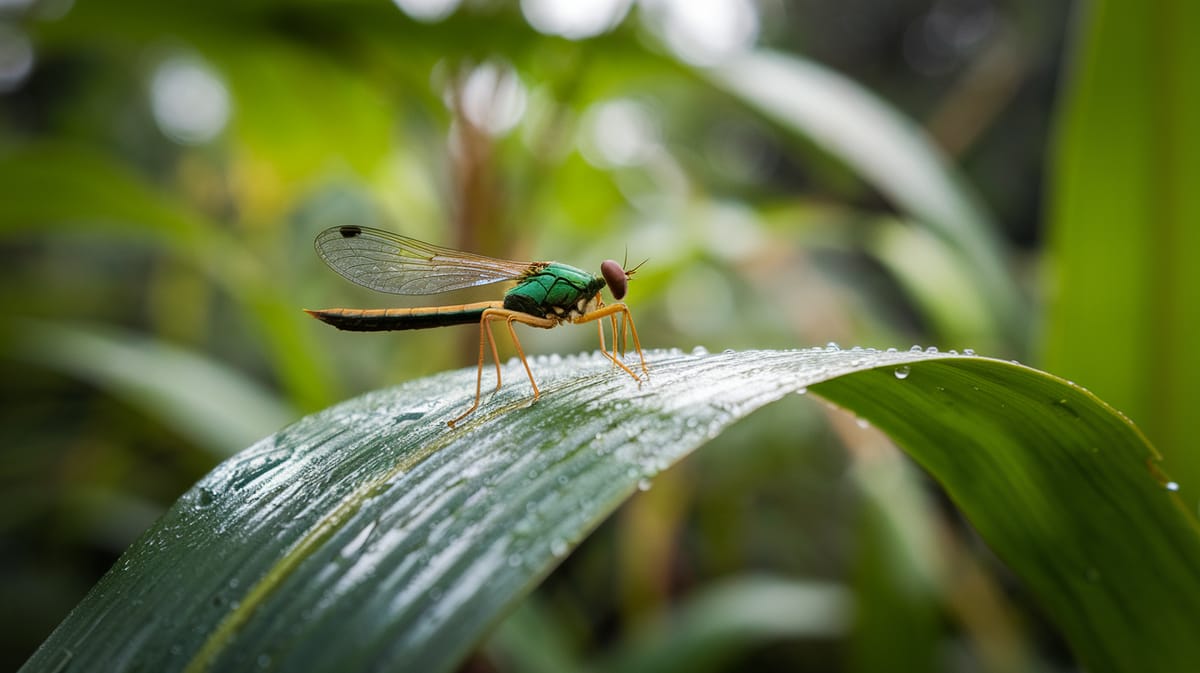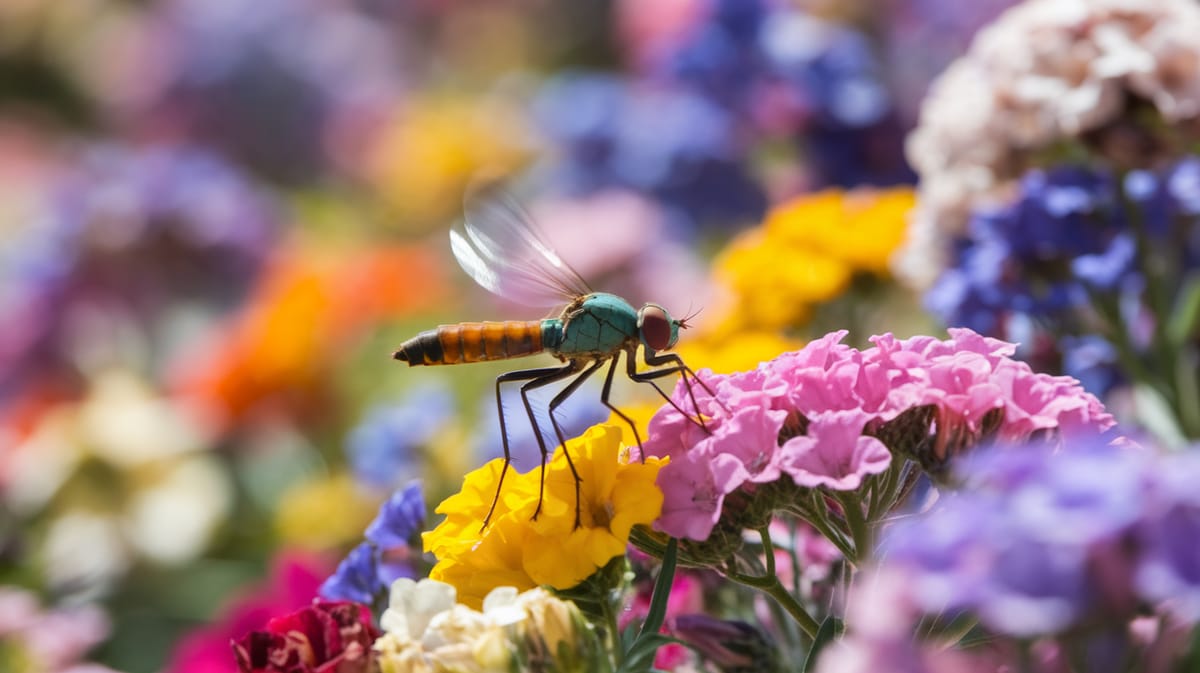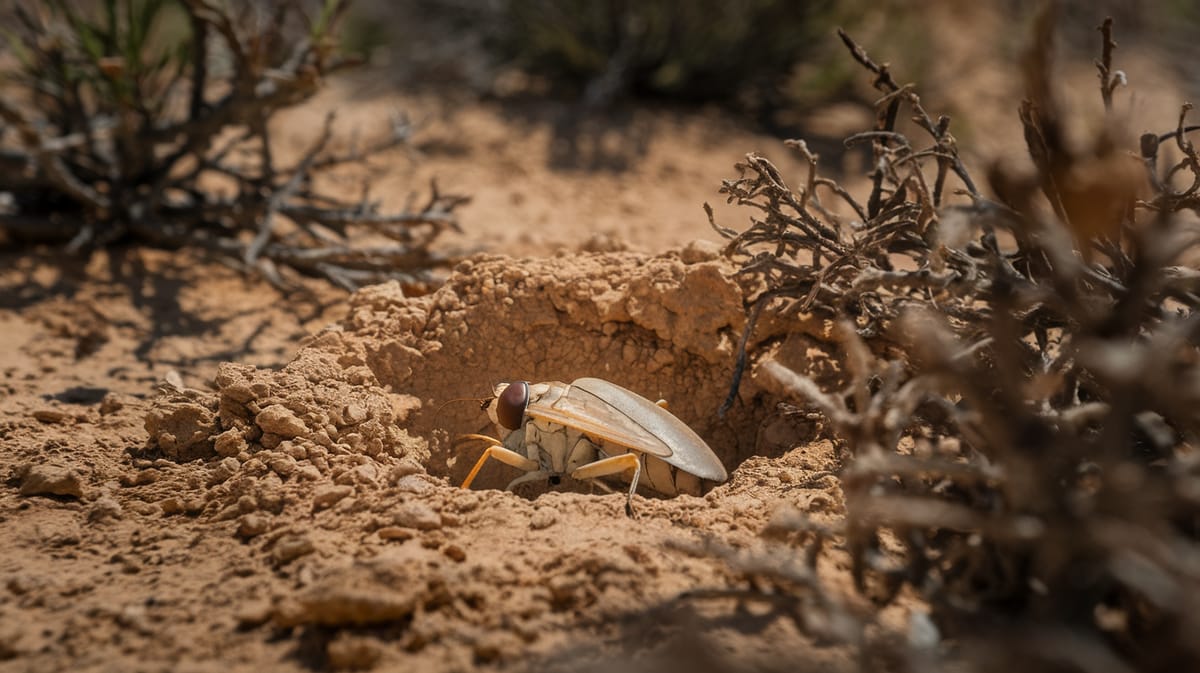Sawfly
Sawflies, with their vibrant colors and wasp-like appearance, play a crucial role in forest ecosystems by feeding on foliage and aiding in plant control. Known for their larval resemblance to caterpillars, they display fascinating mimicry.

Key Insights at a Glance
Did You Know?
Taxonomy & Classification
Sawflies are unique insects known for their caterpillar-like larvae and saw-like ovipositor, reflecting their adaptation to plant-feeding lifestyles. Let's understand the evolutionary journey and classification of these remarkable herbivores.
Global Distribution
Sawflies comprise over 7,000 species, inhabiting diverse regions worldwide, with a significant presence in temperate areas.
Evolutionary Adaptations
Originating in the Jurassic period, sawflies have evolved specialized traits for surviving alongside flowering plants over millions of years.
Lifecycle and Growth
A remarkable journey of transformation from Egg to Adult.
Egg
Sawfly eggs are laid in plant tissue, providing moisture and protection until larvae emerge to begin their growth journey.
Larva
Larvae resemble caterpillars, feeding voraciously on leaves, which can lead to significant plant defoliation and impact ecosystems.
Pupa
This stage occurs in the soil or within a cocoon, where transformation into the adult form takes place.
Adult
Adult sawflies emerge, focusing on mating and laying eggs to continue their life cycle, often without mouthparts for feeding.
Dietary Habits
A plant feeder with specialized adaptations, this insect primarily consumes leaves, occasionally targeting stems and buds for nourishment.
| DIET TYPE | DESCRIPTION |
|---|---|
| Primary Diet | Primarily feeds on leaves of trees and shrubs, especially those from birch, willow, and roses. |
| Secondary Diet | Occasionally targets stems and buds, complementing its diet with plant tissues for varied nutrient intake. |
| Occasional | Rarely consumes pollen or nectar, mainly when other food sources are scarce or unavailable. |

Behaviour and Adaptations
Discover the fascinating adaptations that allow the Sawfly to thrive in diverse environments.
Larval Mimicry
Sawfly larvae resemble caterpillars, deterring predators through mimicry.
Defensive Secretion
Emit distasteful chemicals to ward off threats efficiently.
Rapid Reproduction
High reproductive rates ensure population resilience and survival.
Ecosystem Impact
Sawflies play a vital role in maintaining ecological balance through their interactions with other species.
Natural Decomposer
Sawfly larvae break down leaf litter, enriching the soil with nutrients.
Food Source Provider
Serves as an essential food source for birds and small mammals.
Pollinator Support
Adult sawflies contribute to the pollination of various flowering plants.
Conservation Challenges
Understanding and addressing the major threats to Sawfly populations.
Habitat Loss
Urbanization and deforestation reduce sawfly habitats, threatening their survival.
Climate Change
Altered weather patterns impact sawfly life cycles and food sources.
Pesticide Use
Chemical pesticides harm sawfly larvae and adults, disrupting ecosystems.
Frequently Asked Questions
How long do Sawfly live?
Sawfly adults typically live for about one week to ten days. Their lifespan varies depending on environmental conditions and species. The larval stage, which is the primary feeding stage, can last several weeks before pupating into adults.
What do Sawfly eat?
Sawfly larvae primarily feed on plant foliage, often in groups. They target a wide range of host plants, including trees and shrubs, such as roses, pines, and willows. Adult sawflies primarily consume little or no food.
Are Sawfly poisonous?
Sawflies are not poisonous to humans or pets. While they can cause damage to plants, they do not pose any toxic threat to people. Handling them is generally safe, although they can be a nuisance in large numbers.
Are Sawfly endangered?
Sawflies are not considered endangered. They are widespread and abundant in many regions. Some species might be more vulnerable due to habitat loss or specific environmental threats, but overall, they do not face significant conservation concerns.
What do Sawfly symbolize?
Sawflies do not have a widely recognized symbolic meaning. Unlike some insects, such as butterflies, they are not commonly associated with cultural or symbolic representations. Their primary significance is ecological, as they play a role in the food web and plant health.
Do Sawfly bite?
Sawflies do not bite humans. They lack the typical biting mouthparts seen in some other insects. Instead, their larvae have chewing mouthparts used for feeding on plant material, which can lead to defoliation in plants.
What color are Sawfly?
Sawfly adults are typically black, brown, or yellowish, often resembling wasps. Their larvae, which are caterpillar-like, can be green, yellow, or brown, depending on their species and the plants they feed on.
Does a Sawfly have wings?
Yes, adult sawflies have wings. They possess two pairs of membranous wings, similar to those of bees and wasps, which they use for flying. Their wings are usually transparent with visible veins.
What does a Sawfly look like?
Adult sawflies resemble small wasps, with two pairs of wings and a broad waist. They have elongated bodies and can vary in color. The larvae look like caterpillars but have more prolegs and lack the crochets found in true caterpillars.
Is a Sawfly an insect?
Yes, a sawfly is an insect. It belongs to the order Hymenoptera, which includes bees, wasps, and ants. Sawflies are characterized by their membranous wings and the lack of a narrow waist that distinguishes other hymenopterans like wasps.
Related Insects
Discover insects with similar characteristics to Sawfly - including shared habitats, diets, and taxonomic classifications
Share this profile
Help others discover Sawfly
